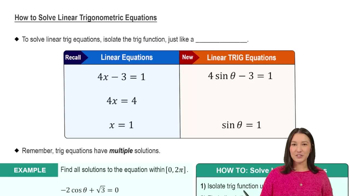Textbook Question
In Exercises 55–58, use a calculator to find the value of the acute angle θ to the nearest degree.tan θ = 4.6252
424
views
 Verified step by step guidance
Verified step by step guidance Verified video answer for a similar problem:
Verified video answer for a similar problem:



 5:50m
5:50mMaster Drawing Angles in Standard Position with a bite sized video explanation from Patrick
Start learning